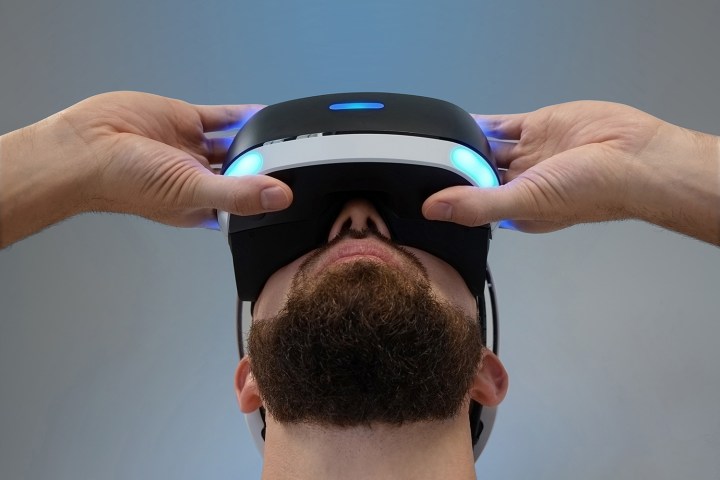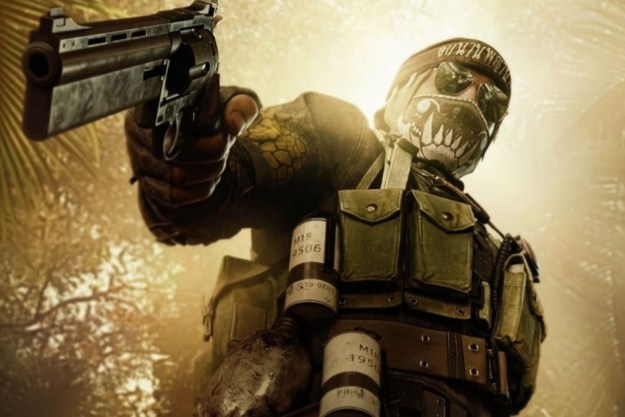
Virtual reality developers are still figuring out how to make a multiplayer experience that feels good. In addition to mastering the usual complexities of multiplayer game design, like keeping players synched together and minimizing the lag between them, VR games come with extra challenges created by the sense of sharing physical space they create.
At Unity’s Vision VR/AR Summit 2017 in Los Angeles, VR multiplayer pioneers came together to share some of what they’ve learned in the first year of making games consumer-grade virtual reality headsets, such as the Oculus Rift, HTC Vive, and PlayStation VR. The three-person panel was made up by Vicki Ferguson of Ubisoft, lead programmer on the company’s first VR game, Eagle Flight; Niv Fisher of One Hamsa, who is working on the virtual racketball-like game Racket NX; and Jeremy Schenker, who created the VR archery game QuiVr by himself.
Each offered some key insights after trying their hands at making VR multiplayer experiences, offering the first few tell-tale signs of a polished, well thought-out game in the space.
1. Bring people together
While testing Racket NX, Fisher found it was very important to give players the ability to respect each other’s in-game personal space, just as they would in real life.
In the game, two players stand side-by-side in virtual reality and play a game akin to real-life racketball. The game uses motion controllers to simulate rackets, with each player trying to score points on the other by bouncing the ball off a wall covered in tiles that award different numbers of points.

Positioning players far enough away from each other that they don’t invade each other’s space, but close enough they can interact, was important for helping players connect. Fisher also said the team made sure to make its non-human avatars expressive and animated so that they feel more alive.
Fisher told a story during the panel about how, while at home testing the game with a coworker who connected over the Internet, he caught himself about to awkwardly scratch himself in the presence of the other person. The other person wasn’t actually in the room and couldn’t have seen him scratching — but he still found himself reacting as if he wasn’t alone.
“My brain was so convinced someone else was there,” Fisher said. “I realized this point is something we want to capture and we want to amplify as much as we can in a game, because it’s just so powerful.”
2. Keep player counts low
For everyone on the panel, acknowledging that virtual reality is still in early days was key to making solid games. Ferguson suggested multiplayer developers should try to keep their team-based games as small as possible. “Play with as few players as you can get away with,” she said.
Ferguson noted that waiting other players in normal games is a bit of a drag as it is, but in VR, the problem is exacerbated by the fact that with a headset on, you can’t really do anything else. And VR remains fragmented between the HTC Vive, Oculus Rift and PlayStation VR, with lots of players spread across different sets of hardware. The fewer players required to make multiplayer game work, the less players have to wait.
The fewer players required to make multiplayer game work, the less players have to wait.
Three-versus-three games worked best for Eagle Flight’s design, Ferguson said, because it kept the game from getting too frantic. But the team also allowed game sizes to be adjustable to help keep wait times down, allowing it to support as few as two players at a time.
“We all know that there are not very many headsets in the wild right now, so although our game is designed for three-versus-three, we allow it to be played with fewer players,” she said.
The other games featured on the panel took a similar tack to keeping their multiplayer experiences light and personal enough to be played easily. Racket NX is a one-on-one experience and QuiVr can be played alone or with other people.
3. Players need some downtime — and something to do
Eagle Flight is a fast-paced team multiplayer game where players control eagles in what is basically a dogfighting game. Ferguson found that, while players enjoyed the intensity of the game, the experience could feel overwhelming. The team addressed that intensity by keeping rounds short — about four minutes — and giving players some downtime between matches when they return to the multiplayer lobby.
Upon further testing, Ubisoft discovered that, with so much downtime, keeping players interested in the game between matches was almost as important as the game itself.

“While they’re in the lobby, you want to make sure that [players] have something to do,” Ferguson explained. “It’s actually really annoying to be sitting, waiting for other players, with a headset on, because you can’t do anything else, right? It’s not like you can look around at stuff on your desk or walk away, because you won’t be in VR anymore.”
Ubisoft solved the problem by making the lobby a responsive space. When players join the lobby, they’re represented by eagles who sit patiently awaiting more players. Ferguson described how adding a little interactivity to those eagle avatars made the game’s multiplayer lobby more engaging.
“What we did is we actually synced the eagle heads to the VR headsets,” she said. “You can see the other players, you can see where they’re looking, and you can have this natural language where you can be like, ‘yeah, good game, dude.’”
4. Encourage good sportsmanship to minimize toxicity
Ferguson and Fisher both also talked about one of the biggest potential problems in multiplayer gaming: Toxic players who can bring down the experience for everyone. Gaming already has players who harangue and harass others while playing, but they can usually be dealt with through means like muting voice chat, banning players from matches, and issuing bad feedback through online services.
VR elevates the potential for troll players to ruin the good time of everyone else, and there are elements of VR that can make players uncomfortable.
“We don’t want players to be able to negatively affect each other in VR, and it’s more important in VR especially if you have a human avatar, because people can get into your personal space and it’s upsetting,” Ferguson said. “It’s important for anyone making a multiplayer VR game to consider harassment.
“We felt it was more important to keep our players safe than put in a half-ass system.”
“You may notice we don’t have voice chat in the game,” she continued. “And although voice chat would help a lot, we didn’t have time to make the system to that would actually allow you to ban and kick players if they were harassing. So we felt it was more important to keep our players safe than put in a half-ass system.”
For Racket NX, Fisher said that amplifying the feeling of “presence” in the game helped foster good sportsmanship. The more players felt like they were actually sharing their virtual space with another person, the more likely they were to remain consistently respectful.
“That co-presence feeling, that sharing of the game, it really reduces toxicity because people are really much less likely to swear or be rude when they feel like they’re right in front of a person. …When they’re actually feeling that someone is next to them, they’re not going to be as rude, and they’re not going to allow themselves to be as rude. The co-presence feeling is really, really powerful.”
5. Pay attention to all player feedback
As a developer working on his own, Schenker stressed how important it’s been for him to function as a community manager as well as a game-maker. Since virtual reality is full of early adopters, paying attention to what those people say and think about your game is essential, he said.
“You also should be listening to and reading everything said about your game,” Schenker said. “If someone took their time to write something down, you better be willing to read it. Negative feedback means that they care enough to say something about the game and voice their dissatisfaction. If they didn’t give ideas for how to fix something, ask for them.
“If someone asks you to implement swords in your archery game, don’t just dismiss them,” Schenker said. “Explain the direction your game is going, and why it might not fit with the overall vision. This community is absolutely too small to start dismissing people. I’ve seen many times with a number of games, where the developers have dismissed people, and it’s created a lifelong enemy, and independent developers can’t afford that.”


